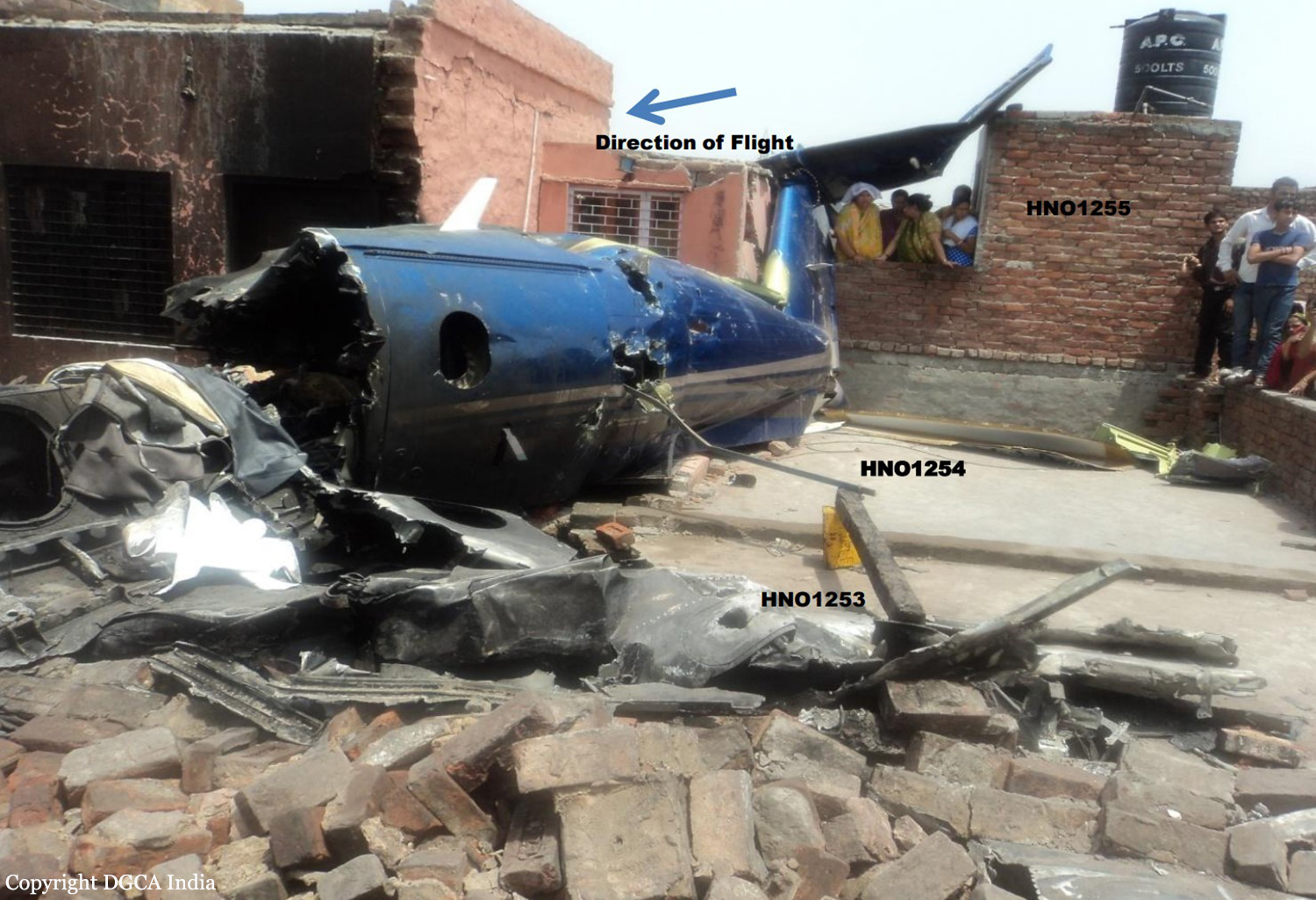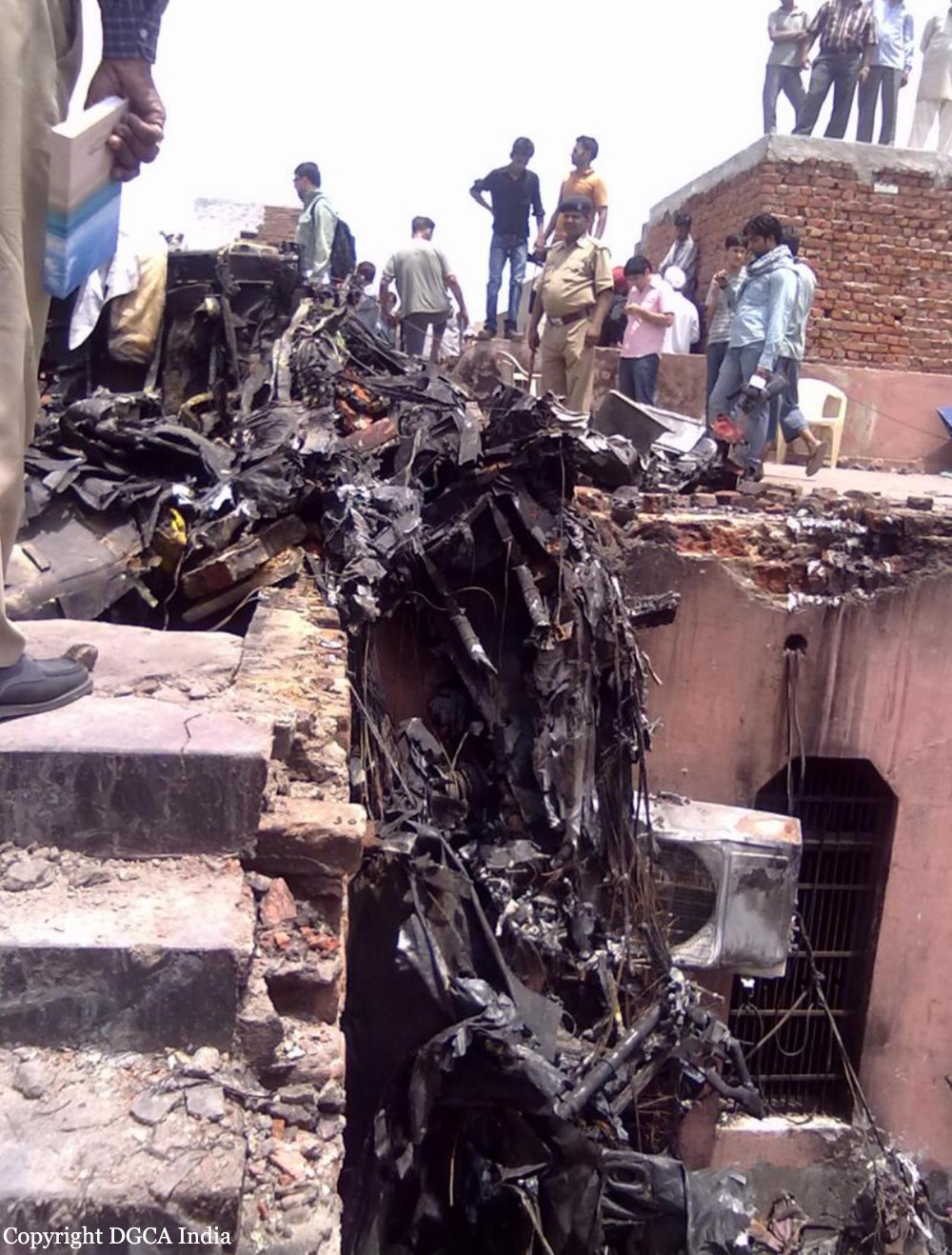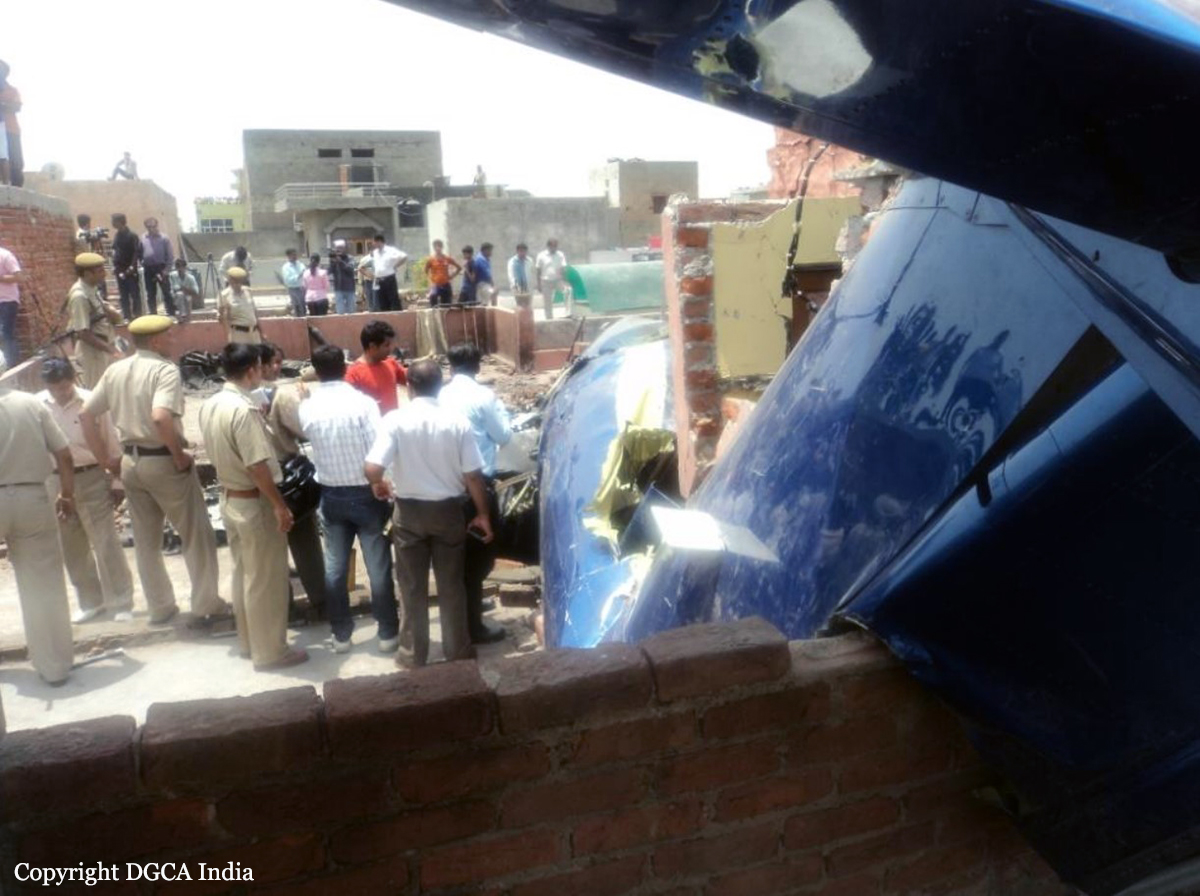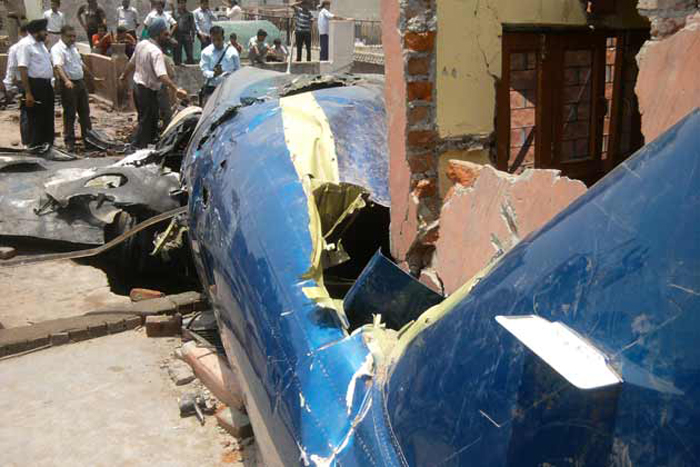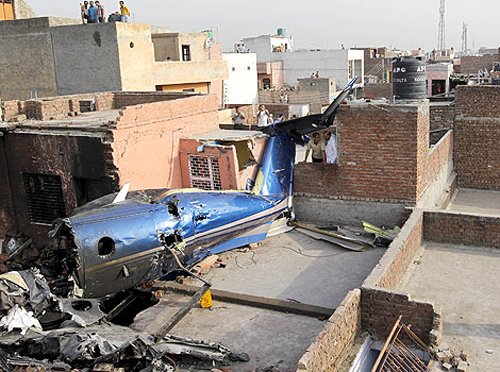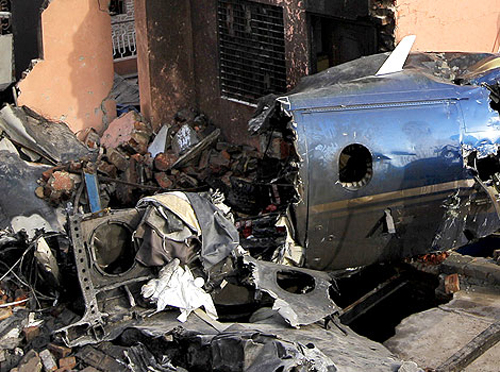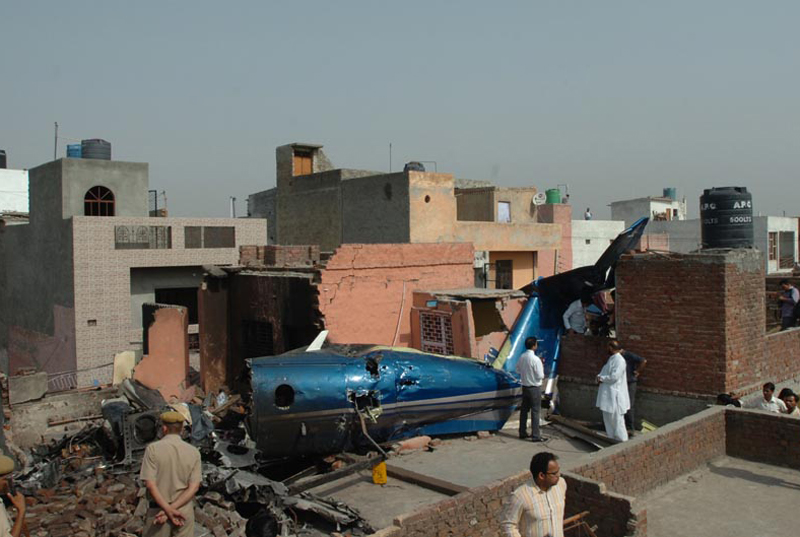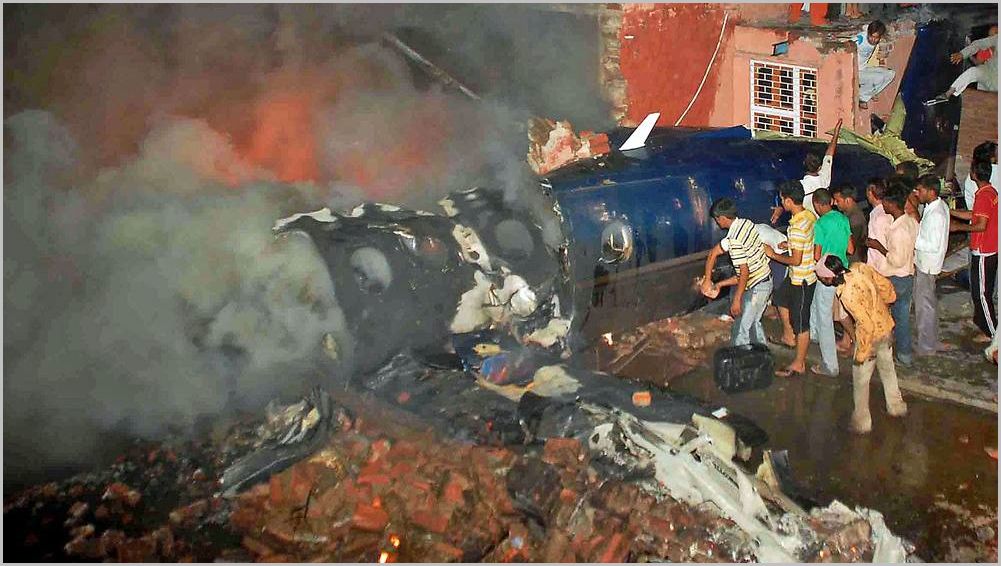Country
Operator Image

Crash of a Cessna 560XL Citation Excel in Aligarh
Date & Time:
Aug 27, 2019 at 0840 LT
Registration:
VT-AVV
Survivors:
Yes
Schedule:
New Delhi - Aligarh
MSN:
560-5259
YOM:
2002
Crew on board:
2
Crew fatalities:
Pax on board:
4
Pax fatalities:
Other fatalities:
Total fatalities:
0
Captain / Total hours on type:
1064.00
Copilot / Total hours on type:
1060
Aircraft flight hours:
7688
Circumstances:
On 27 Aug 19, M/s Air Charter Services Pvt Ltd Cessna Citation 560 XL aircraft (VTAVV), while operating a flight from Delhi to Aligarh (Dhanipur Airstrip) was involved in an accident during landing on runway 11.The operator is having a maintenance facility at Aligarh Airport and aircraft was scheduled to undergo ADS-B modification. There were 02 cockpit crew and 04 SOD onboard the aircraft. The aircraft was under the command of a PIC, who was an ATPL holder duly qualified on type with a CPL holder co-pilot, duly qualified on type as Pilot Monitoring. This was the first flight of the day for both pilots. Both, PIC and Co-Pilot had prior experience of operating to Aligarh airport, which is an uncontrolled airport. As per the flight plan, ETD from Delhi was 0800 IST and ETA at Aligarh was 0820 IST. The crew had reported around 0630 IST at Delhi airport and underwent BA test. The MET report to operate the aircraft to Aligarh was well within the VFR conditions. The aircraft Take-off weight was within limits including 1900 Kgs of fuel on board. As per the statement of PIC, the Co-pilot was briefed about pre departure checklists including METAR before approaching the aircraft. Once at the aircraft, prefight checks were carried out by PIC before seeking clearance from Delhi delivery (121.95 MHz). Aircraft was accorded start up clearance by Delhi ground (121.75 Mhz) at 0800 IST.ATC cleared the aircraft to line up on runway 11 and was finally cleared for takeoff at 0821 IST. After takeoff, aircraft changed over to Delhi radar control from tower frequency for further departure instructions. Aircraft was initially cleared by Radar control to climb to FL090 and was given straight routing to Aligarh with final clearance to climb to FL130. Thereafter, aircraft changed to Delhi area control for further instructions. While at approximately 45 Nm from Aligarh, VT-AVV made contact with Aligarh (personnel of M/s Pioneer Flying Club manning radio) on 122.625 MHz. Ground R/T operator informed “wind 100/2-3 Kts, QNH 1005, Runway 11 in use” and that flying of Pioneer Flying Club is in progress. Further, he instructed crew to contact when at 10 Nm inbound. After obtaining initial information from ground R/T operator, VT-AVV requested Delhi area control for descent. The aircraft was cleared for initial descent to FL110 and then further to FL080. On reaching FL080, aircraft was instructed by Delhi area control to change over to Aligarh for further descent instruction in coordination with destination. At approx 10 Nm, VT-AVV contacted ground R/T operator on 122.625 MHz and requested for long finals for runway 11. In turn, ground R/T operator asked crew to report when at 5 Nm inbound. As per PIC, after reaching 5 Nm inbounds, Aligarh cleared VTAVV to descend to circuit altitude and land on runway 11. Aircraft had commenced approach at 5 Nm at an altitude of 2200 ft. Approach and landing checks briefing including wind, runway in use were carried out by PIC. During visual approach, Co-pilot called out to PIC “Slightly low on profile”. As per PIC, Co-pilot call out was duly acknowledged and ROD was corrected. Thereafter, PIC was visual with runway and took over controls on manual. Co-pilot was monitoring instruments and parameters. While PIC was focused on landing, a loud bang from left side of the aircraft was heard by PIC when the aircraft was below 100 feet AGL. Aircraft started pulling towards left and impacted the ground short of runway 11 threshold. After impact, aircraft veered off the runway and its left wing caught fire. The aircraft stopped short of airfield boundary wall. Crew carried out emergency evacuation. Co-pilot opened main exit door from inside of the aircraft for evacuation of passengers. Aircraft was destroyed due to post crash fire. The fire tender reached the crash site after 45 Minutes.
Probable cause:
While landing on runway 11, aircraft main landing gears got entangled in the powerline crossing extended portion of runway , due to which aircraft banked towards left and crash landed on extended portion of runway 11.
Contributory factors:
- It appears that there was a lack of proper pre-flight briefing, planning, preparation and assessment of risk factors.
- Non-Adherence to SOP.
- Sense of complacency seems to have prevailed.
Contributory factors:
- It appears that there was a lack of proper pre-flight briefing, planning, preparation and assessment of risk factors.
- Non-Adherence to SOP.
- Sense of complacency seems to have prevailed.
Final Report:
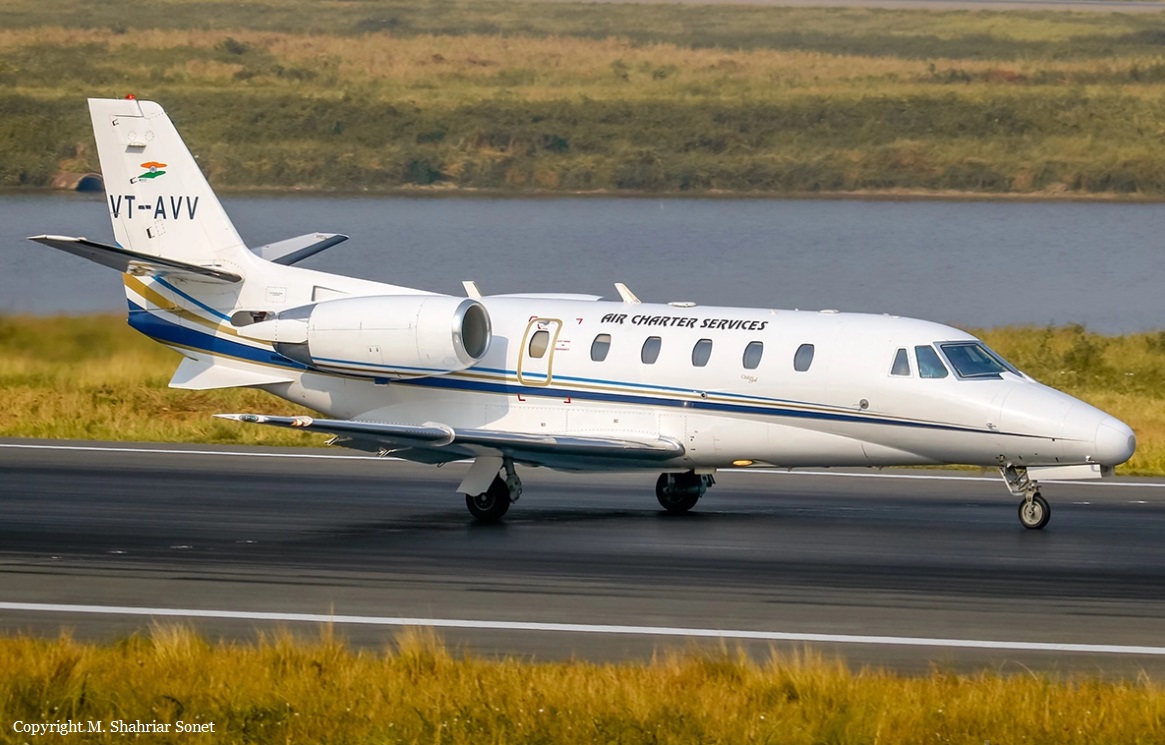
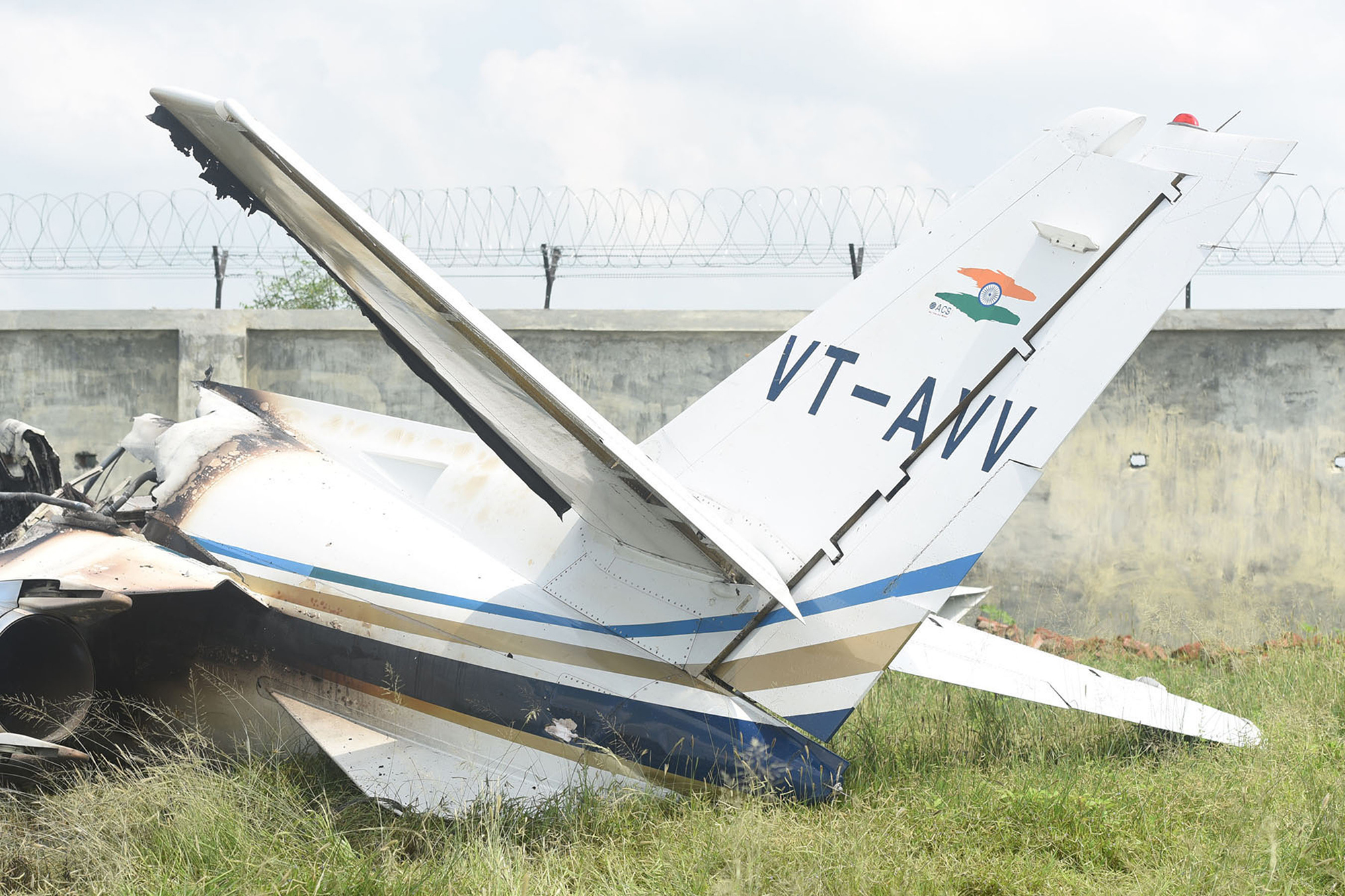
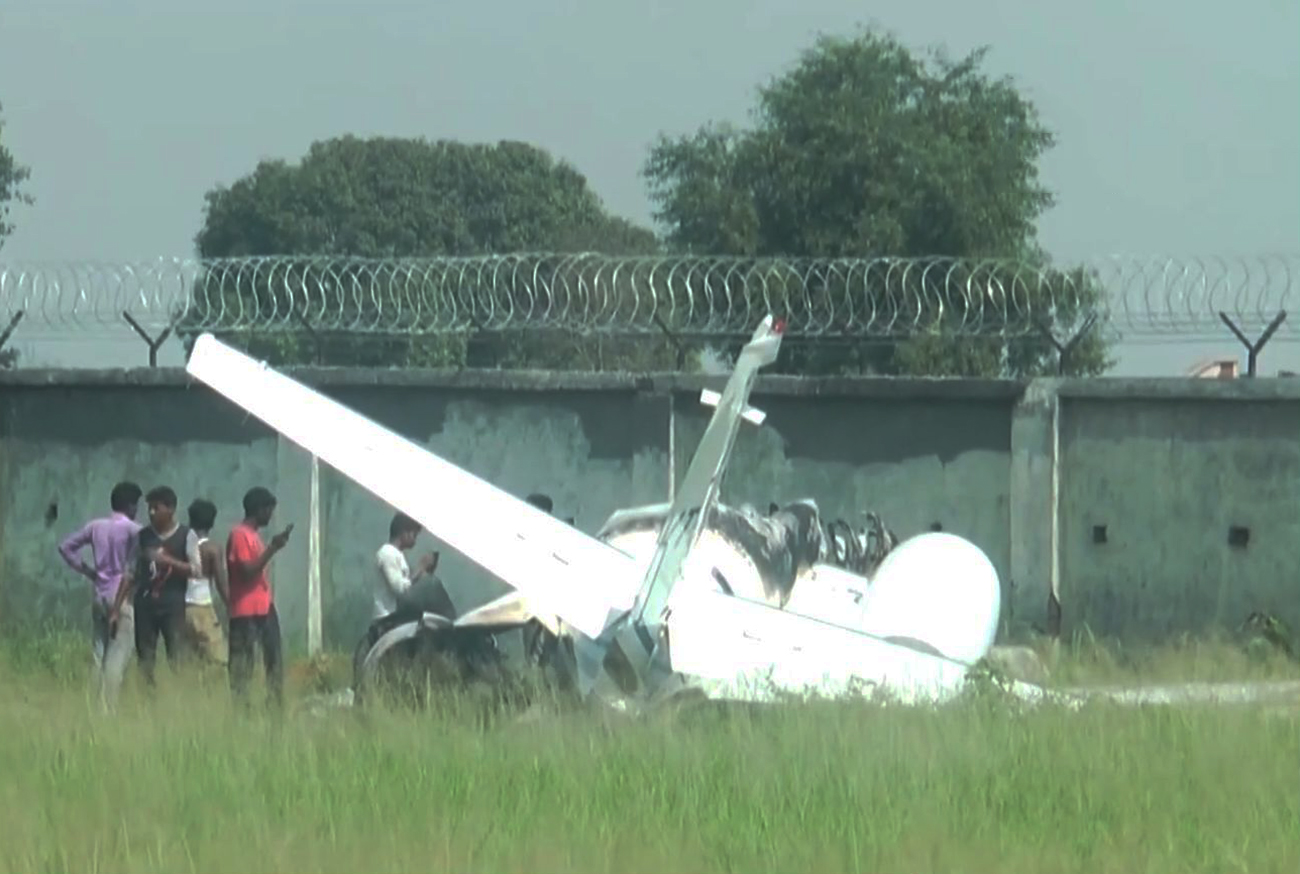
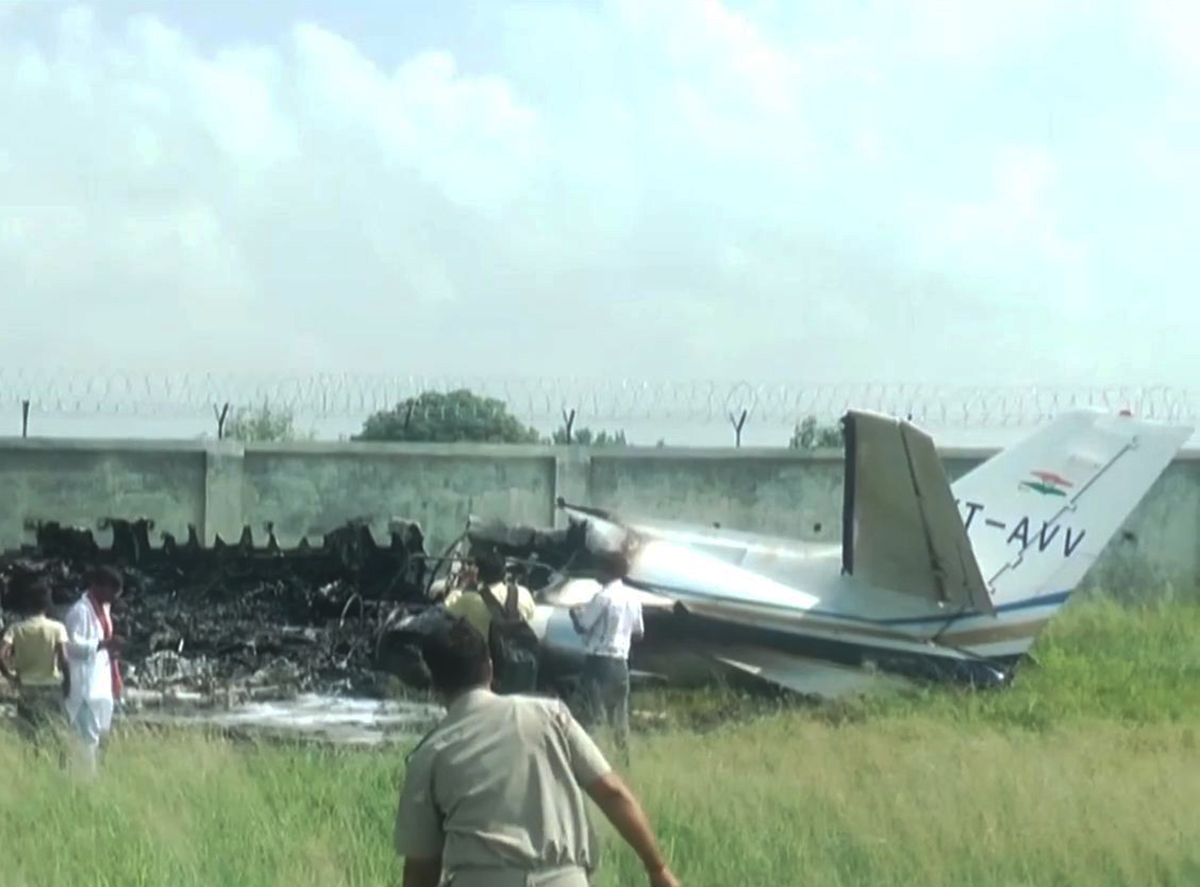
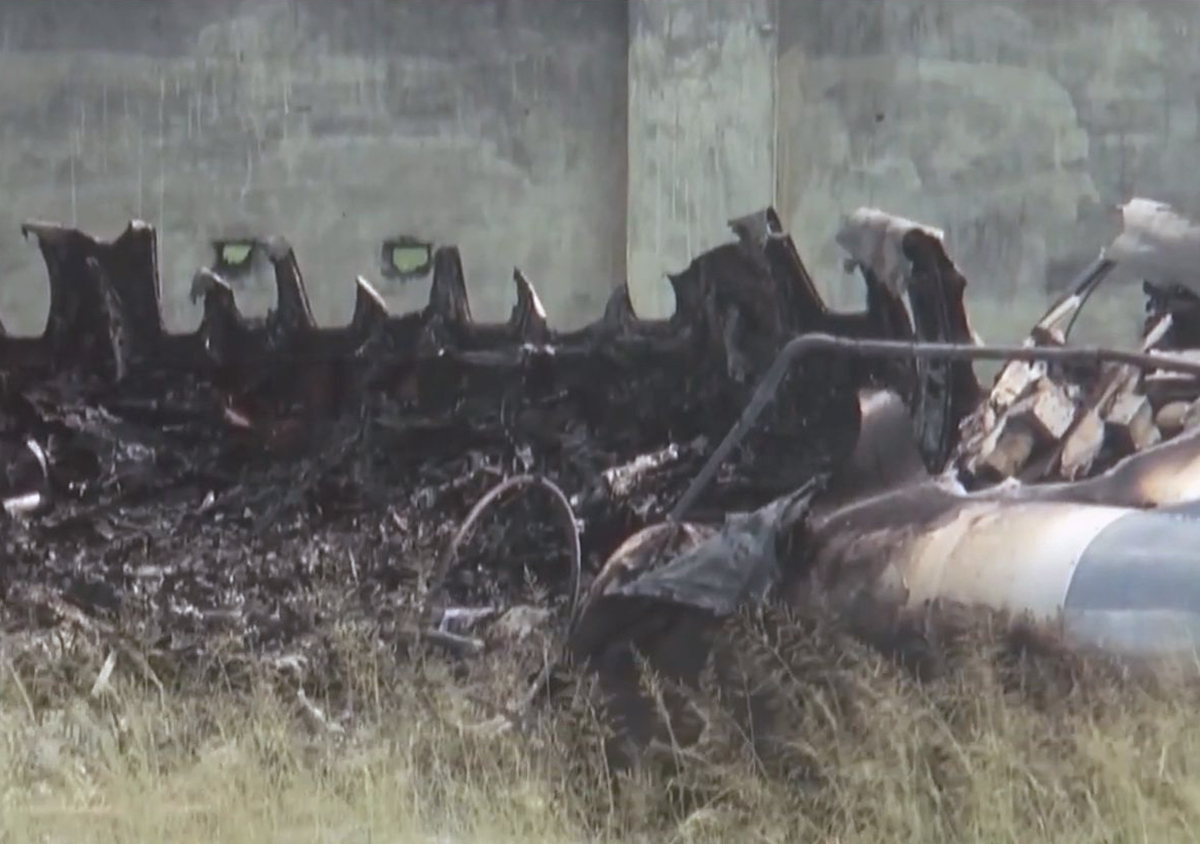
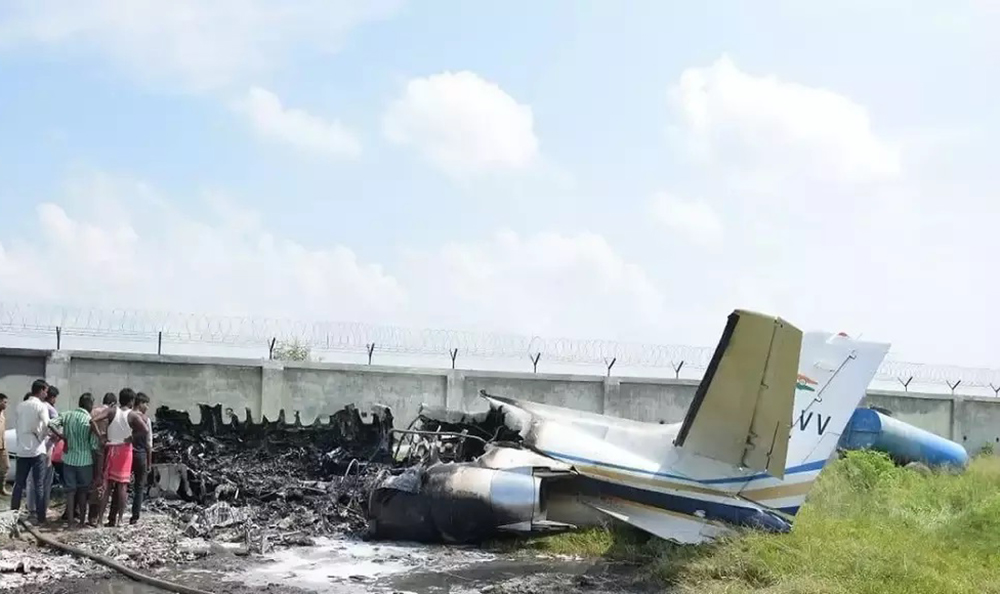
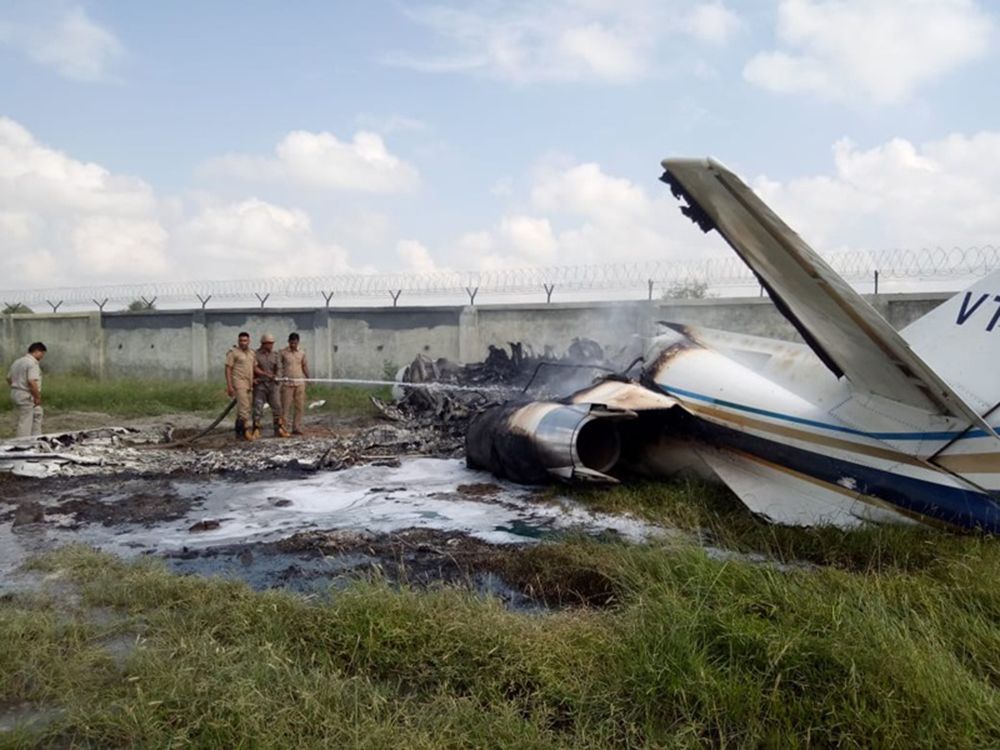
Crash of a Pilatus PC-12/47 in Kamphaeng Saen: 1 killed
Date & Time:
Mar 5, 2017 at 1916 LT
Registration:
VT-AVG
Survivors:
Yes
Schedule:
New Delhi – Calcutta – Bangkok
MSN:
888
YOM:
2008
Crew on board:
2
Crew fatalities:
Pax on board:
3
Pax fatalities:
Other fatalities:
Total fatalities:
1
Circumstances:
The single engine aircraft departed New Delhi at 0842LT on an ambulance flight to Bangkok with two pilots and three doctors on board. A refueling stop was completed at Calcutta Airport. At 1903LT, en route to Bangkok-Don Mueang Airport, the crew contacted ATC and requested permission to divert to Kamphaeng Saen Airport due to an emergency. The permission was granted and the crew initiated the descent when the aircraft disappeared from radar screens at 1916LT. The burned wreckage was found an hour and 30 minutes later, at 2048LT, in a wooded area located few km from runway 22L threshold. All five occupants were injured while the aircraft was destroyed. Few hours later, the copilot died from his injuries.
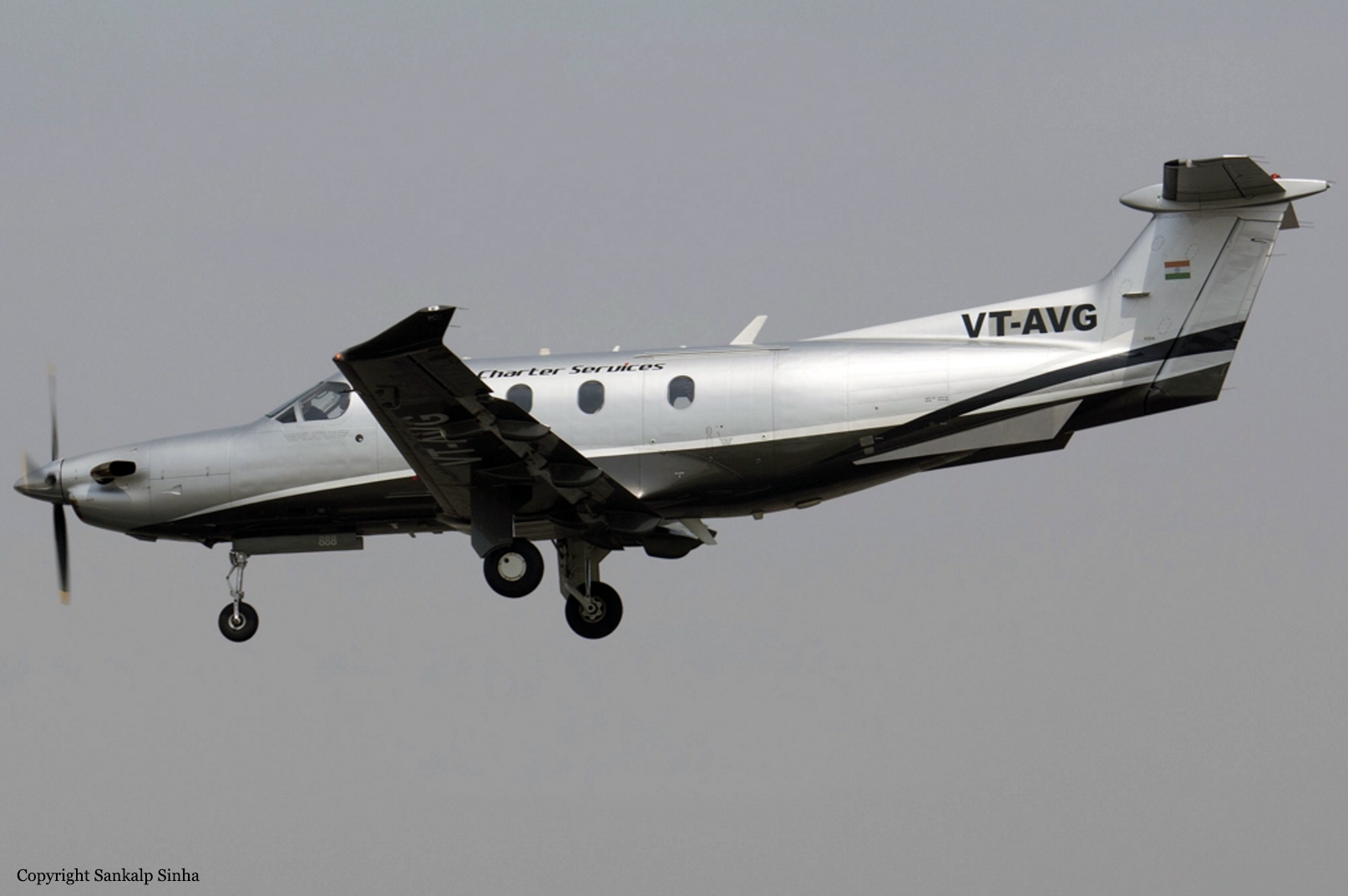
Crash of a Pilatus PC-12/45 in Faridabad: 10 killed
Date & Time:
May 25, 2011 at 2243 LT
Registration:
VT-ACF
Survivors:
No
Schedule:
Patna - New Delhi
MSN:
632
YOM:
2005
Crew on board:
2
Crew fatalities:
Pax on board:
5
Pax fatalities:
Other fatalities:
Total fatalities:
10
Captain / Total hours on type:
1300.00
Copilot / Total hours on type:
70
Aircraft flight hours:
1483
Circumstances:
M/s Air Charter Services Pvt Ltd. offered their aircraft VT-ACF for operating medical evacuation flight to pick one critically ill patient from Patna on 25/05/2011. The Aircraft took off from Delhi to Patna with two crew members, two doctors and one male nurse. The Flight to Patna was uneventful. The Air Ambulance along with patient and one attendant took off from Patna at 20:31:58 IST, the aircraft during arrival to land at Delhi crashed near Faridabad on a Radial of 145 degree and distance of 15.2 nm at 22:42:32 IST. Aircraft reached Patna at 18:31 IST. Flight Plan for the flight from Patna to Delhi was filed with the ATC at Patna via W45-LLK-R594 at FL260, planned ETD being 22:00 hours IST and EET of 2hours for a planned ETA at VIDP being 24:00 hours IST. The crew took self-briefing of the weather and same “Self Briefing” was recorded on the flight plan submitted at ATC Patna. The passenger manifest submitted at Patna indicated a total of 2 crew and 5 passengers inclusive of the patient. Weather at Patna at the time of departure was 3000m visibility with Haze. Total fuel on board for departure at Delhi was 1516 lts. The preflight/transit inspection of the aircraft at Patna was carried out by the crew as per laid down guidelines. The crew requested for startup at 20:21 IST from Patna ATC and reported airborne at 20:33:43 IST. The aircraft climbed and maintained FL 260 for cruise. On handover from Varanasi Area Control (Radar), the aircraft came in contact with Delhi Area Control (East) Radar at 21:53:40 IST at 120.9 MHz. At 21:53:40 IST aircraft was identified on Radar by squawking code 3313. At 22:02:05 IST the crew requested for left deviation of 10° due to weather, the same was approved by the RSR controller. At 22:05:04 IST the crew informed that they have a critical patient on board and requested for priority landing and ambulance on arrival. The same was approved by the RSR controller. The aircraft was handed over to Approach Control on 126.35 MHz at 22:28:03 IST. At 22:28:18 IST VT-ACF contacted TAR (Terminal Approach Radar) on 126.35 MHz and it was maintaining FL160. At 22:32:22 IST, VT-ACF was asked to continue heading to DPN (VOR) and was cleared to descend to FL110. At 22:36:34 IST, the TAR controller informed VT-ACF about weather on HDG 330°, the crew replied in “Affirmative” and requested for left heading. At 22:38:12 IST, TAR controller gave aircraft left heading 285° which was copied by the aircraft. The aircraft started turning left, passing heading 289, it climbed from FL125 to FL141. At 22:40:32 IST the TAR controller gave 3 calls to VT-ACF. At 22:40:43 IST aircraft transmitted a feeble call “Into bad weather”, at that instance the aircraft had climbed FL 146.Thereafter the aircraft was seen turning right in a very tight turn at a low radar ground speed and loosing height rapidly from FL146 to FL 016. Again at 22:41:32 IST TAR controller gave call to VT-ACF, aircraft transmitted a feeble call “Into bad weather. Thereafter the controller gave repeated calls on both 126.35 MHz and also 121.5 MHz, before the blip on radar became static on a radial of 145 degree at 15.2 nm from DPN VOR at 22:42:32 IST. All attempts to raise contact with the aircraft failed. The TAR controller then informed the duty WSO and also the ATC Tower. At 22:50:00 IST, the tower informed the WSO that they have got a call from the City Fire Brigade confirming that an aircraft has crashed near Faridabad in a congested residential area known as Parvatia Colony. After the accident, local residents of the area and police tried to put off the fire and extricate the bodies from the wreckage of the aircraft.
Probable cause:
The probable cause of the accident could be attributed to departure of the aircraft from controlled flight due to an external weather related phenomenon, mishandling of controls, spatial disorientation or a combination of the three.
Final Report:
